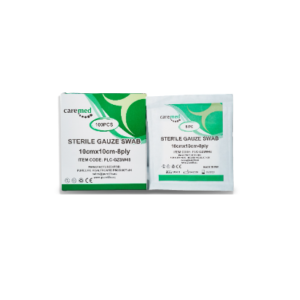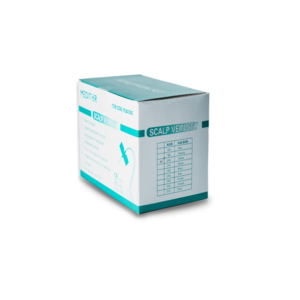An Elastic Tubular Bandage is a seamless, stretchable bandage designed to provide support, compression, and protection for injured or swollen body parts. It is made from a blend of cotton, polyester, and elastane, allowing it to fit snugly without restricting movement.
Key Features:
Elastic & Stretchable – Provides firm, even compression
Tubular Design – No need for pins or tapes
Breathable Fabric – Comfortable for long wear
Multiple Sizes – Fits different body parts (arms, legs, wrists, etc.)
Uses – Ideal for sprains, strains, swelling, wound dressing, and post-surgical support

Elastic Tubular Bandage
Elastic Tubular Bandage supplier UAE
Elastic Tubular Bandage supplier Abu Dhabi
Elastic Tubular Bandage supplier Dubai
Elastic Tubular Bandage supplier Sharjah
Elastic Tubular Bandage supplier Ajman
Elastic Tubular Bandage supplier Ras Al Khaimah
Elastic Tubular Bandage supplier Fujairah
Elastic Tubular Bandage supplier Umm Al Quwain
Elastic Tubular Bandage: A Complete Overview
Elastic tubular bandages are seamless, stretchable medical bandages designed to provide support, compression, and protection for various injuries and conditions. Made from a combination of cotton, elastane, and synthetic fibers, these bandages offer flexibility and comfort without the need for clips, pins, or adhesive tapes. Their ability to conform to different body shapes makes them a preferred choice for healthcare professionals and individuals seeking effective compression therap
The breathable fabric of an elastic tubular bandage allows for proper air circulation, preventing moisture buildup and reducing the risk of skin irritation. This makes them suitable for prolonged use, ensuring comfort even when worn for extended periods. The soft yet firm material ensures even pressure distribution, which is essential for reducing swelling, supporting weak joints, and aiding recovery from muscle strains or sprains. Since they do not require adhesives, they are an excellent option for people with sensitive skin who may experience allergic reactions to traditional bandages or tape
Elastic tubular bandages have a wide range of applications in medical and sports settings. They are commonly used for treating sprains and strains, offering gentle compression to injured muscles and joints. In post-surgical care, these bandages help control swelling and enhance blood circulation, contributing to faster healing. Additionally, they are ideal for securing wound dressings in place, particularly in areas where adhesive bandages may not adhere properly. Many athletes and physiotherapists also rely on these bandages for injury prevention and muscle support during physical activities
Available in multiple sizes and elasticity levels, elastic tubular bandages can be used for different body parts, from fingers and wrists to knees, elbows, and even larger areas like the thigh. The choice of size is crucial for effective compression—too tight may restrict circulation, while too loose may fail to provide adequate support. Some bandages come with a double-layer feature, offering enhanced compression for conditions requiring more intensive support. This versatility makes them useful for both minor injuries and long-term medical conditions requiring continuous compression therap
One of the biggest advantages of elastic tubular bandages is their ease of application and maintenance. They can be slipped over the affected area without the need for additional fastening, ensuring a secure and comfortable fit. For stronger compression, the bandage can be folded over to create multiple layers. These bandages are reusable and washable, making them a cost-effective and environmentally friendly choice. To maintain their elasticity and durability, it is recommended to wash them by hand using mild soap and allow them to air dry, avoiding excessive heat or wringing
Medical equipment plays a crucial role in modern healthcare, providing tools and devices that assist in the diagnosis, treatment, and management of various medical conditions. These devices range from simple instruments like thermometers and blood pressure monitors to highly advanced machines such as MRI scanners and robotic surgical systems. The development and continuous advancement of medical equipment have revolutionized patient care, allowing for more accurate diagnoses, minimally invasive treatments, and improved patient outcomes. Without reliable medical equipment, healthcare professionals would struggle to provide effective care,
The field of medical equipment can be broadly categorized into diagnostic, therapeutic, life-support, and monitoring devices. Diagnostic equipment includes imaging machines such as X-rays, ultrasounds, CT scans, and MRIs, which help doctors visualize internal structures and detect abnormalities. Blood analyzers, ECG machines, and stethoscopes also fall under this category, enabling medical professionals to assess various health conditions. Therapeutic equipment, on the other hand, includes devices like infusion pumps, dialysis machines, and physiotherapy tools, which are used to treat or manage diseases effectively. These devices aid in delivering medications, removing toxins, and rehabilitating patients recovering from injuries or surgeries
Another critical category is life-support equipment, which includes ventilators, defibrillators, and anesthesia machines. These devices are often used in emergency and intensive care settings to sustain life by maintaining vital body functions. Ventilators, for instance, assist patients who have difficulty breathing, while defibrillators restore normal heart rhythm in cases of cardiac arrest. Monitoring equipment, such as heart rate monitors, oxygen saturation meters, and fetal monitors, plays a vital role in tracking a patient’s condition in real time. These devices provide critical information that helps doctors and nurses make timely me
The medical equipment industry is continuously evolving, incorporating cutting-edge technologies such as artificial intelligence (AI), robotics, and the Internet of Medical Things (IoMT). AI-powered diagnostic tools are now capable of detecting diseases like cancer at an early stage, improving treatment success rates. Robotics has enhanced precision in surgeries, reducing recovery time and minimizing risks. Additionally, IoMT devices, such as smart insulin pumps and remote patient monitoring systems, allow healthcare providers to track patients’ health remotely, leading to better management of chronic diseases and reduced hospital visits. These advancements are transfo
Maintaining and ensuring the quality of medical equipment is essential for patient safety and effective treatment. Regulatory authorities, such as the U.S. Food and Drug Administration (FDA) and the European Medicines Agency (EMA), enforce strict standards to ensure the safety, accuracy, and reliability of medical devices. Hospitals and healthcare facilities must also follow proper maintenance and sterilization procedures to prevent infections and ensure equipment longevity. In many developing countries, access to quality medical equipment remains a challenge, highlighting the need for global initiatives that provide affordable and reliable healthcare technology to underserved regions
Diagnostic medical equipment is used to identify and assess medical conditions. These devices help healthcare providers detect diseases, evaluate symptoms, and determine the best course of treatment. Examples include X-ray machines, MRI scanners, CT scanners, ultrasound devices, and electrocardiographs (ECG machines). These imaging tools allow doctors to view internal organs, bones, and tissues, helping them diagnose conditions such as fractures, tumors, and heart diseases. Blood testing equipment, like hematology analyzers and glucometers, also falls into this category, providing crucial insights into a patient’s health
Therapeutic equipment is designed to treat medical conditions and assist in patient recovery. These devices are used in hospitals, rehabilitation centers, and home healthcare settings. Examples include dialysis machines, ventilators, infusion pumps, and physical therapy equipment. Dialysis machines help filter waste from the blood in patients with kidney failure, while ventilators provide breathing support for those with respiratory difficulties. Infusion pumps deliver controlled doses of medication, fluids, or nutrients, ensuring precise treatment. In rehabilitation, TENS machines, ultrasound therapy devices, and mobility aids assist in pain management and muscle recovery
Life-support medical equipment is critical in intensive care and emergency medicine, as it helps sustain vital body functions. This category includes ventilators, defibrillators, heart-lung machines, and anesthesia machines. Ventilators assist patients who cannot breathe independently, supplying oxygen and removing carbon dioxide. Defibrillators are used to restore normal heart rhythm in cases of cardiac arrest, while heart-lung machines support circulation and oxygenation during complex surgeries. Anesthesia machines deliver a precise mix of gases and anesthetics, ensuring that patients remain unconscious and pain-free during surgical proceduress
Brand
CAREMED
Caremed Medical Equipment Trading LLC is based in Saudi Arabia, started its Middle East operations in the year 2011, by opening its distribution center in Dubai-UAE, with the aim to supply a complete range of a high quality & competitively priced surgical disposables, medical and hospital equipment and supplies. Through the course of time, they have built a commendable presence in the U.A.E. market. Now their products are being sold to all GCC countries, Africa, Europe and in the United States of America.









Joseph VT –
Elastic Tubular Bandage – good product ⭐️⭐️⭐️⭐️⭐️